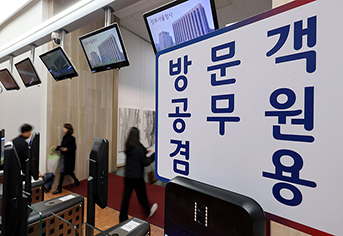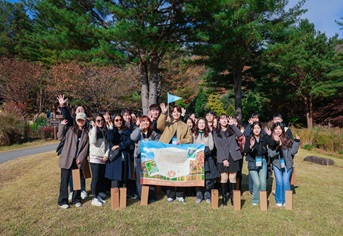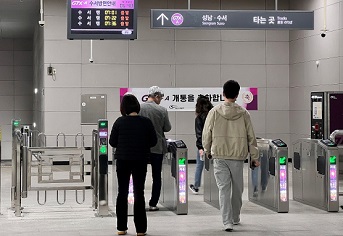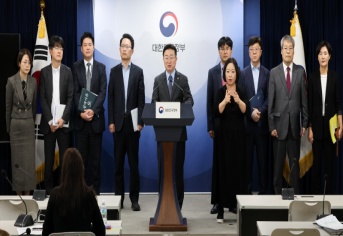문화재청 국립고궁박물관(관장 김인규)은 조선 시대 도자기인 <숙종태항아리>를 9월의 ’큐레이터 추천 왕실 유물‘로 정해 국립고궁박물관 지하1층 상설전시장 ’왕실의례‘ 전시실에서 소개하고, 9월 1일부터 문화재청과 국립고궁박물관 유튜브로 온라인 공개한다.
* 문화재청 유튜브: https://www.youtube.com/chluvu
* 국립고궁박물관 유튜브: https://www.youtube.com/gogungmuseum
조선왕실에서는 태아와 어머니를 연결하는 ’태(胎)‘를 소중히 보관하는 문화가 의례로 규범화되었다. 사람들은 생명의 시작을 함께하는 태가 아이의 운명과 연결되었다고 믿었고, 아이의 삶이 순탄하길 바라며 왕손의 태를 태항아리에 넣은 후 좋은 땅에 묻었다. 조선왕실의 태항아리에는 새 생명이 평안하게 잘 자라길 바라는 마음이 담겨 있다.
소개하는 <숙종 태항아리>는 태를 담는 작은 내(內)항아리와 내항아리를 담는 큰 외(外)항아리로 구성되었다. 항아리의 어깨 부분에 구멍을 낸 고리를 달았고, 뚜껑에는 구멍을 뚫은 손잡이를 만들었으며, 몸체와 뚜껑에 끈을 교차시켜 항아리를 봉할 수 있게 하였다. 태항아리는 숙종의 생년월일을 적은 태지석도 함께 묻었다.
* 태지석 내용: 辛丑年八月十五日卯時生 元子阿只氏胎[신축년(1661년) 8월 15일 묘시(오전 5~7시) 생 원자아기씨 태]
전시는 코로나19 확산 방지를 위해 방역수칙을 준수하는 가운데 진행되며, 직접 방문하지 않아도 국민 누구나 볼 수 있도록 국립고궁박물관 누리집(gogung.go.kr)과 문화재청과 국립고궁박물관 유튜브에서 국·영문 자막과 함께 해설영상도 공개한다.
The National Palace Museum of Korea Presents “Set of White Porcelain Placenta Jars and Tablet for King Sukjong” as the Curator’s Choice for September
- Vessels that Contained the Placenta and Umbilical Cord of a Royal Baby of the Joseon Dynasty to Be Showcased in the Gallery and on YouTube / Starting September 1.-
The National Palace Museum of Korea (Director: Kim In Kyu), an affiliate of the Cultural Heritage Administration of Korea, has selected the “Set of White Porcelain Placenta Jars and Tablet for King Sukjong” as its “Curator’s Choice from the Royal Treasures” for the month of September. In addition to being displayed in the Royal Rituals of the Joseon Dynasty permanent gallery on floor B1 of the museum, the set will be presented virtually in a YouTube broadcast starting September 1.
* National Palace Museum of Korea YouTube: https://www.youtube.com/gogungmuseum
** Cultural Heritage Administration YouTube: https://www.youtube.com/chluvu
The Joseon royal court established standard protocols for preserving the placenta and umbilical cord of each newly-born royal baby. It was believed that the placenta and umbilical cord (collectively known as “tae” in Korean) contributed to the growth and development of a new life and would influence the fate of the baby. The tae of future heirs to the throne was therefore carefully placed inside a set of jars and buried in an auspicious site. These jars produced for Joseon royal babies embody wishes for the newborn to lead a peaceful and successful life.
The placenta jars of King Sukjong include an inner and outer jar. Lugs are attached at four points on the shoulders of both jars, and the knobs are pierced with holes to allow a string to be bound in a crossing manner and secure the lid to the body. A tablet documenting the date of the birth of King Sukjong was entombed along with the placenta jars.
***Inscription on the tablet: Placenta and umbilical cord of a first son born during myosi (57 am) on the fifteenth day of the eighth lunar month in 1661
The museum may currently be accessed only in accordance with the requirements in place to reduce the potential for the spread of COVID-19. Those who are unable to visit the gallery in person can still enjoy this month’s Curator’s Choice virtually through a video with Korean and English subtitles available on the museum’s website (gogung.go.kr). Our visitors canalso see on the YouTube channels ofthe museum and of the Cultural Heritage Administration of Korea.
![[크기변환]숙종 태항아리, 태지석1.jpg [크기변환]숙종 태항아리, 태지석1.jpg](http://www.cha.go.kr/newopen/cmm/seditor/getImageFile.do?seId=87cf5813afe6497b84df4fc52a29e035)
<숙종 태항아리와 태지석>
 이 누리집은 대한민국 공식 전자정부 누리집입니다.
이 누리집은 대한민국 공식 전자정부 누리집입니다.

























![[윤석열 대통령 뉴스위크 인터뷰] “윤 대통령의 가장 큰 문제는 북한이 아니다”](https://www.korea.kr/newsWeb/resources/attaches/2024.11/12/8984513668bfcb5351ed652346d39d9f.jpg)
![[전문] 윤석열 대통령, 국민께 드리는 말씀](https://www.korea.kr/newsWeb/resources/attaches/2024.11/07/9cb9da1b11f3db7be804c8e18a080b6e.jpg)










